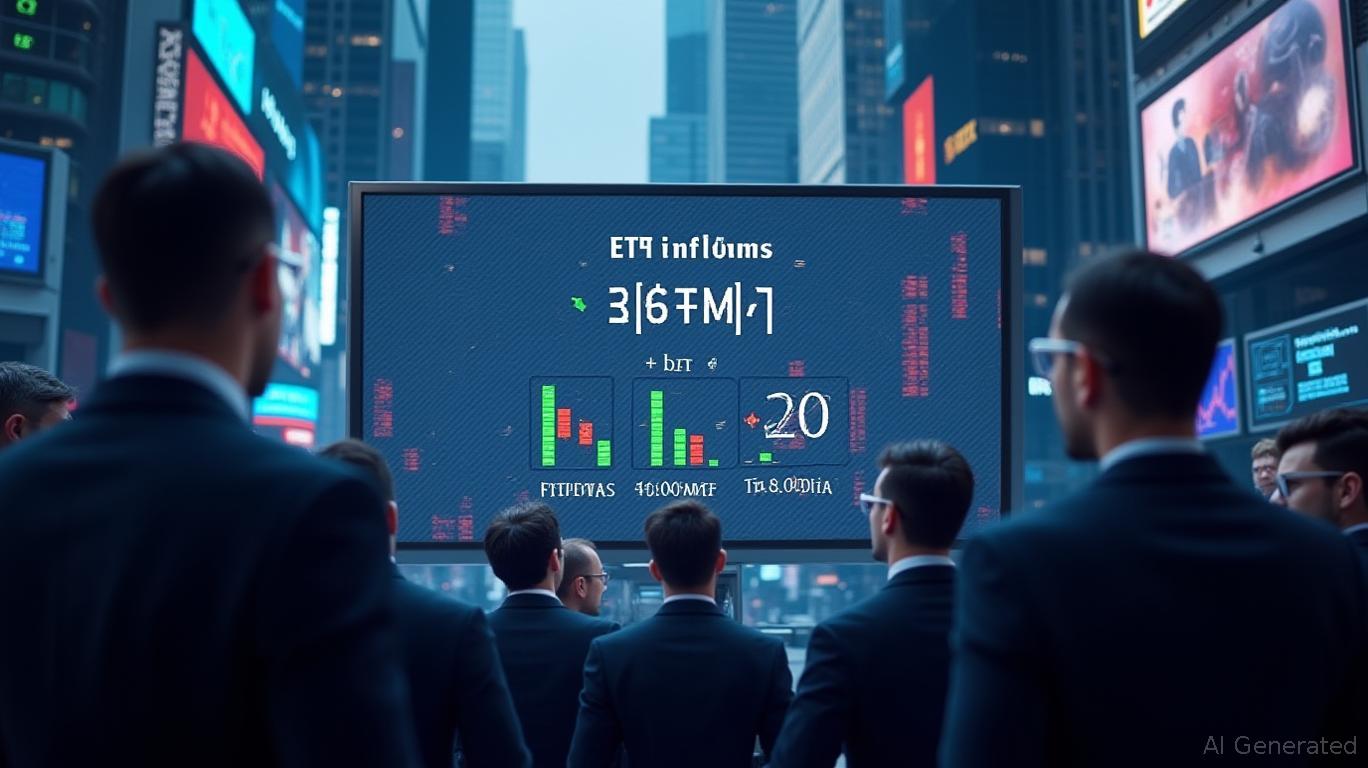SUSHI experiences a 0.18% increase over 24 hours, while facing a 14.41% drop in the past week as a result of overall market downturn.
- SUSHI rose 0.18% in 24 hours but fell 14.41% in 7 days, reflecting broader crypto market weakness and sustained bearish pressure. - Technical indicators show oversold RSI, bearish moving averages, and negative MACD, reinforcing pessimism about SUSHI's short-term recovery. - A backtesting strategy tested buying SUSHI after 10%+ drops with 10% take-profit and 8% stop-loss aims to assess mean-reverting potential amid volatility. - Despite temporary 24-hour gains, SUSHI's 66.96% annual decline highlights str
As of November 3, 2025,
Recent price trends emphasize the ongoing difficulties SUSHI encounters in sustaining upward movement. The gain seen in the last day may signal short-lived buying activity, but it stands out against a backdrop of persistent selling. The continued monthly decline of 8.09% indicates that significant resistance levels have yet to be decisively challenged. Experts believe that unless the broader market sees a strong recovery, SUSHI is likely to stay exposed to further declines.
Technical analysis has been instrumental in reinforcing the negative outlook for SUSHI. The RSI has been in oversold conditions for several weeks, yet the token keeps testing lower support levels. Furthermore, both the 50-day and 200-day moving averages remain in a bearish configuration, suggesting that any short-term rallies may not last. The MACD has also stayed negative for a prolonged period, with no clear indication of a bullish crossover emerging.
Backtest Hypothesis
Based on the technical signals mentioned, a practical backtesting method was outlined. The strategy treats each day when SUSHI drops by 10% or more as a possible opportunity to enter a long position. Once initiated, the position remains open until a set exit condition is met—such as holding for a fixed number of days (for example, 5 trading days) or using risk management rules (like a 10% profit target, 8% stop loss, or a maximum of 10 days). This method is intended to test whether buying after sharp declines and exiting with a profit or stop loss could be effective.
The purpose of the backtest is to evaluate if SUSHI tends to revert to the mean following significant drops. By applying this approach to historical data from January 1, 2022 onward, the analysis aims to measure key statistics like total profit and loss, win rate, and maximum drawdown. This helps assess whether a systematic trading strategy could have produced gains despite the token’s high volatility.
Disclaimer: The content of this article solely reflects the author's opinion and does not represent the platform in any capacity. This article is not intended to serve as a reference for making investment decisions.
You may also like
Solana News Update: Institutions Favor Solana's Fast Transactions, Driving $417 Million ETF Inflows and Surpassing BTC and ETH
- Solana's blockchain hit $29B weekly DEX volume and 70M daily transactions in October, surpassing Ethereum . - Bitwise Solana ETF attracted $417M inflows, outpacing Bitcoin/ETH ETFs amid growing institutional adoption. - Network's 1,100 TPS throughput and 7% staking yields contrast with Ethereum's 3% yields and fragmented Layer 2 solutions. - Whale activity and $2T stablecoin transfers highlight ecosystem strength, while XRP's 25,000 daily accounts lag behind.

Supreme Court Set to Decide on Trump Tariffs Amid Dispute Over Presidential Authority
- U.S. Supreme Court will rule on Trump's global tariffs, testing presidential emergency powers under IEEPA. - Lower courts declared tariffs illegal, but Trump frames them as vital for national survival and economic growth. - Critics warn expanded executive authority risks congressional oversight, while small businesses face existential costs from 10%+ duties. - Ruling could invalidate $10B+ in revenue or enable future administrations to bypass legislative constraints through emergency declarations. - Case

Supreme Court Ruling May Reshape Balance Between Executive and Congressional Authority on Trade
- U.S. Supreme Court will decide if Trump's global tariffs under IEEPA exceed presidential authority, reshaping executive-congressional trade power balance. - Legal challenge argues IEEPA's emergency powers don't authorize tariffs, citing Congress' constitutional commerce regulation role and "major questions doctrine" violations. - Ruling could invalidate $100B+ in tariffs, destabilize fiscal strategy, and set precedent limiting or expanding future presidential trade power unilaterally. - Economic risks in

Bitcoin Updates: Institutions Wager on Bitcoin Pullback While Market Awaits Broader Economic Triggers
- Matrixport highlights Bitcoin's near-oversold levels as potential "buying the dip" opportunities amid declining on-chain activity and shifting market structure. - Institutional confidence grows as entities like The Smarter Web Company and Hyperscale Data accumulate BTC during price dips, signaling long-term strategic positioning. - Analysts warn sustained recovery depends on macro catalysts like regulation or economic shifts, despite technical indicators showing early stabilization and $100k support. - M
